Octave Edge Devices
This topic provides information about Octave-enabled devices.
mangOH Yellow
Octave works with mangOH Red WP7702 and mangOH Yellow with global coverage. mangOH is a family of open source hardware platforms for the Internet of Things, that turns your ideas into commercial products quickly, delivering 90% of your prototype right out-of-the-box. Loaded with onboard sensors designed to work with Octave, you can easily configure mangOH with the onboard GPIO to extend your prototype. Visit mangoh.io for more details on the platform.
The mangOH Yellow provides built-in accelerometer, gyroscope, magnetometer, pressure, humidity, acoustic mic, air Index quality, temperature, and light sensors as well as a slot for an IoT Expansion Board.
The kit kit also includes a USB cable used to power your mangOH Yellow from either a laptop or an external power supply:

Note
2G users are strongly encouraged to use a LiPo battery or external power supply as not all laptops can provide the current required for certain 2G operations.
mangOH Red
The mangOH Red provides an out-of-the box hardware reference design and enables rapid prototyping of new ideas. The board provides a number of sensors: light, pressure, temperature, gyroscope, accelerometer as well as a Raspberry Pi connector and a slot for an IoT Expansion Board. Once your prototype is complete, you can then adapt and reuse the industrial-grade design as well as Sierra Wireless AirPrime modules in final production. Visit mangoh.io for more details on the platform.
The mangOH Red Octave comes complete with a Raspberry Pi compatible 4-line LCD as well as cellular and GPS antennas. The antennas are required in order to receive strong cellular and satellite signals.
The Octave kit also includes an USB cable used to power your mangOH Red from either a laptop or an external power supply:

Note
2G users are strongly encouraged to use a LiPo battery or external power supply as not all laptops can provide the current required for certain 2G operations.
The LCD is used to provide on-board feedback and to serve as a debugging output:
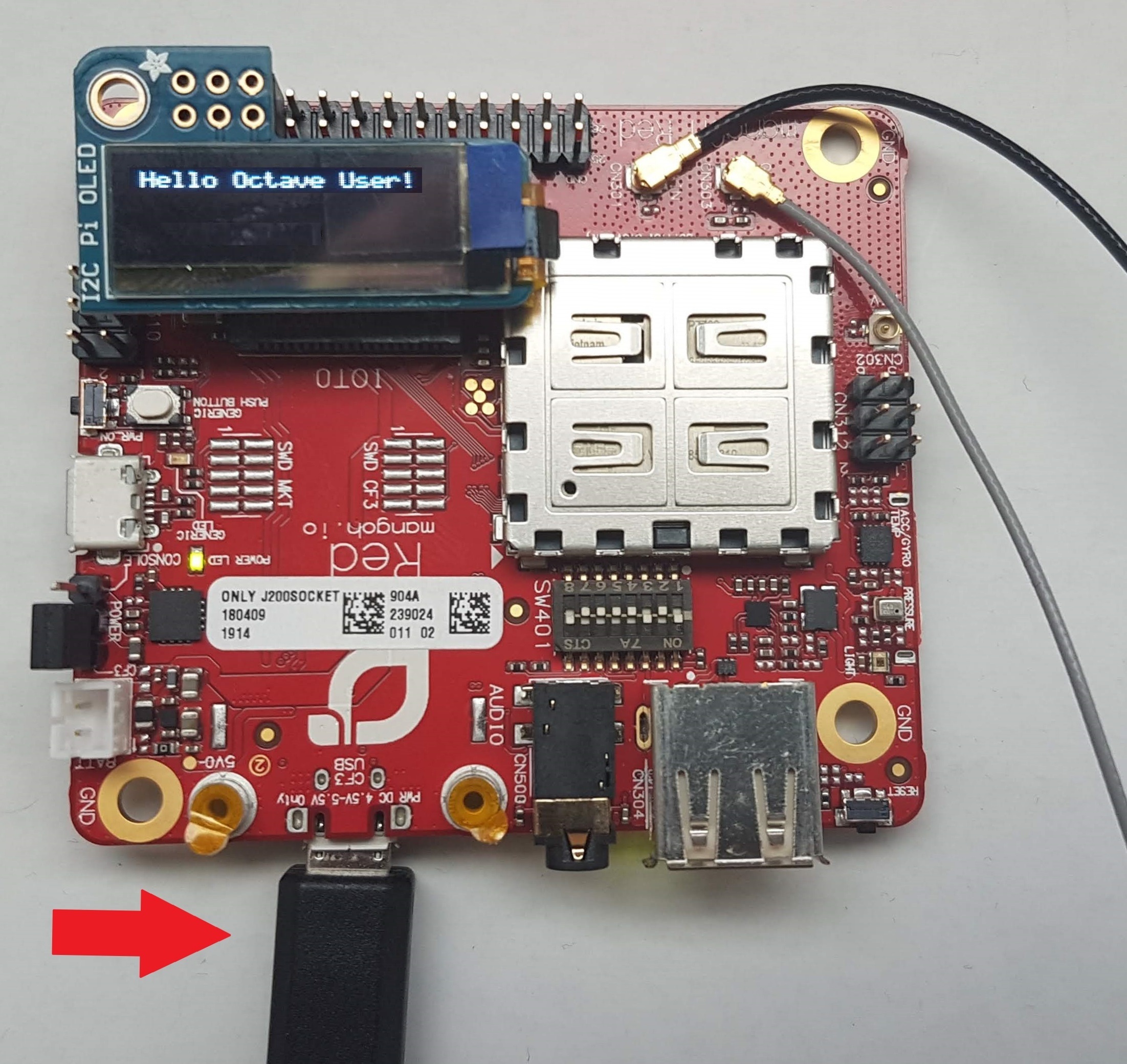
The mangOH Red is equipped with the Sierra Wireless AirPrime WP7702 which offers LTE-M connectivity with 2G fallback for any cellular network. The module provides both the Low-Power Wide-Area cellular communication capability as well as a host processor for the Octave Edge Package.
Rasberry Pi HAT Pin Map
The Rasberry Pi HAT pins on the mangOH Red can be used to connect Digital Input and Output. The diagram below illustrates the GPIO pins available to the Octave IO Service (WP_GPIO 1, 2, 3, and 8) as well as current sources and ground. The voltage range for Digital Inputs on these pins is 3.3 volts.
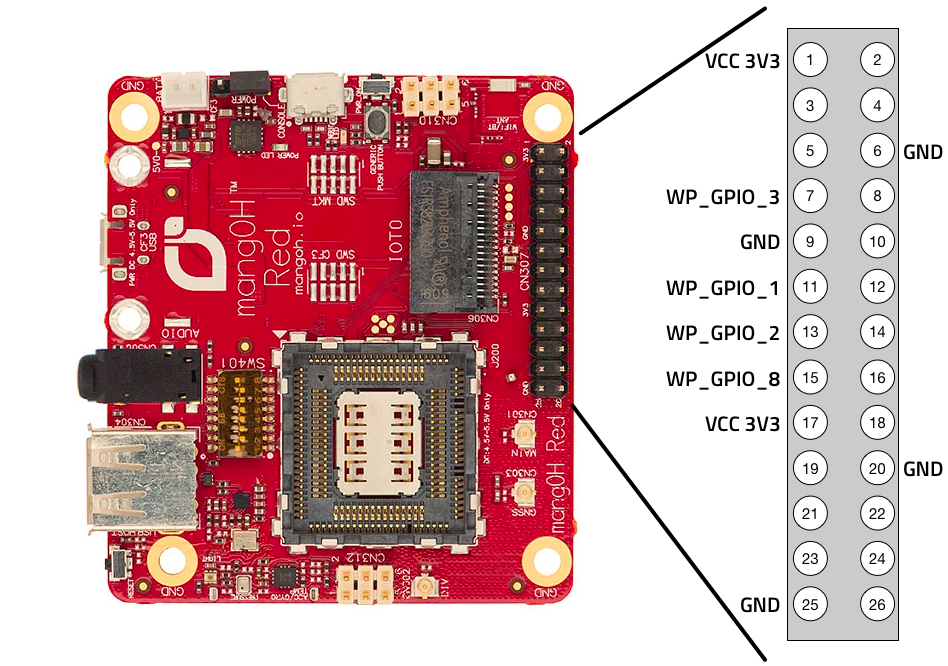
The following diagram provides additional detail:
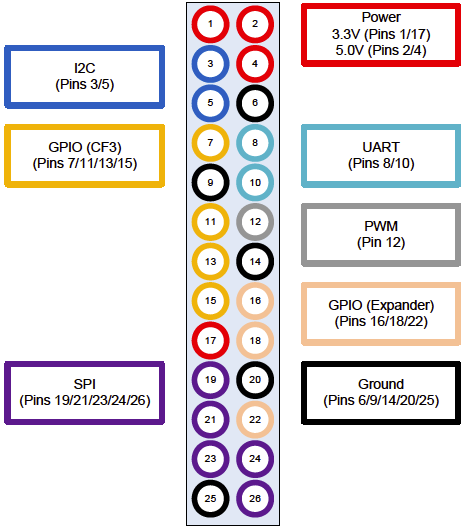
Note
UART pins 8 and 10 are TX and RX respectively.
mangOH Red Low Power IO
The mangOH Red CN312 pin out has two additional Analog inputs, as well as a 1.8 volt current source. The diagram below documents the Low Power IO pinout.

The mangOH Red includes a basic development IoT expansion board with a number of empty pin holes that you can experiment with when getting started with Octave. The pin map is provided in the next section.
Check out our Getting Started with the mangOH Red
IoT Expansion board
The IoT Expansion Card form factor represents an open hardware standard for sensors, network adapters, and other IoT technologies that can be "plugged" into host applications (e.g. hardware development boards) to provide new features and interfaces. As a family, IoT Expansion Cards share a standardized footprint and pinout, with several interfaces to support various IoT technologies.
Your mangOH Yellow or Red kit will come with a prototyping board that fits into the IoT Expansion Slot. This pins on this card provide access to both digital input/output and a single analog input. The diagram below illustrates the GPIO pins available to the Octave IO Service (GPIO 1, 2, 3, 4 and ADC0) as well as current sources and ground. The voltage range for Digital Inputs on these pins is 1.8 volts.
IoT expansion cards can be used with both the mangOH and FX30. IO operations on these cards are supported in Octave.
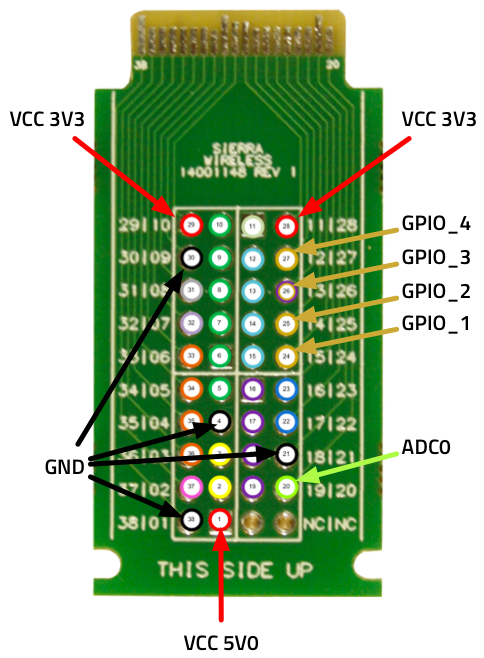
The open hardware standard means that you can implement different solutions on the card such as those shown here.
For additional information see the IoT Expansion Card Documentation.
IoT Expansion Board Complete Pin Map
The following figure shows the pinout for the IoT expansion board included with the mangOH Red.
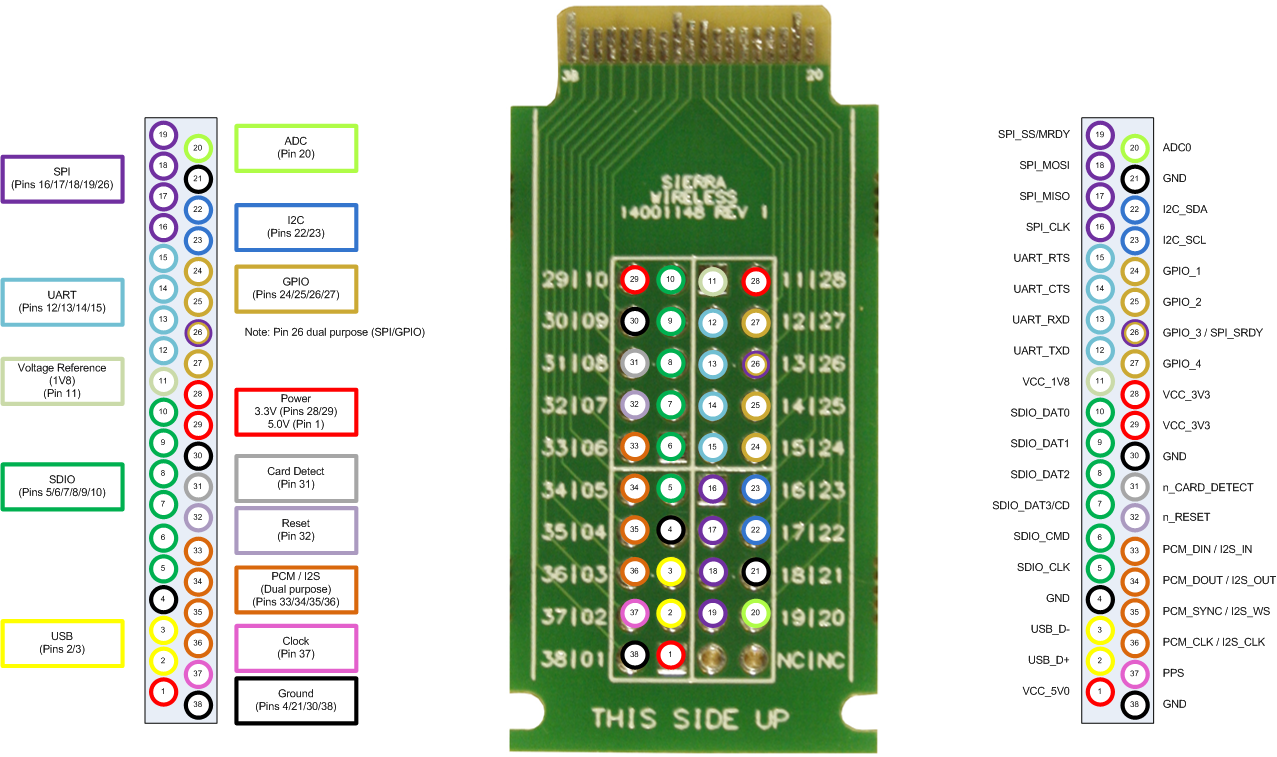
FX30
The FX30 is a small, rugged, programmable Internet of Things (IoT) gateway, that runs a long-term support (LTS) Linux® operating system. Without Octave, the FX30 is a simple USB modem, its full potential is realized when Octave is installed and the FX30 becomes part of your connected solution. With Serial, USB, I/O interfaces, and IoT Expansion cards; the FX30 can connect to many machines, sensors, and industrial assets.
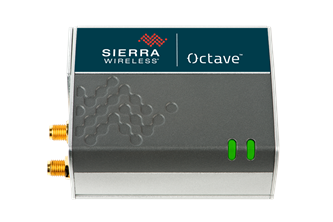
Rear Port Pinout
Pins 4, 5, and 6 on the FX30's power connector can be used to connect Digital Input and Output. The diagram below illustrates the pins available to the Octave IO Service as well as current sources, the control line, and ground.
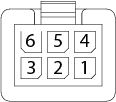
The follow table describes each pin:
| Pin | Function | Wire Color | Description |
|---|---|---|---|
| 1 | Power | Red | Main power supply for device. |
| 2 | Ground | Black | Main device ground. |
| 3 | On/Off | Yellow | Control line to turn the gateway on and off. |
| 4 | IO 1 | Brown | Digital input, Wake from Low Power Active State, and Internal pull-up control. |
| 5 | IO 2 | Green | Digital input, Wake from Low Power Active State, Internal pull-up control, and Analog input. |
| 6 | IO 3 | Orange | Digital input, Internal pull-up control, Digital output. |
For additional information see the FX30/FX30S user guides.
Ethernet Version
The FX30 is available with an Ethernet port that can be used for communication with devices on a Local network, for example, over Modbus TCP:
Serial Version
The FX30 is also available with a rear serial port and this version of the device is known as the FX30S.
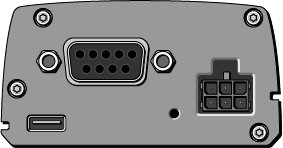
The serial port supports RS-232 and RS-485 and can be used to communicate with Modbus devices through the Modbus Service, as well as Octave Resource Protocol-capable devices.
Updated about 5 years ago
Follow our getting started guides and discover how Octave can help you build your solutions.
